Theme 4: Building and Exercising Power
Building and exercising our power is an essential part of movement-building. Many attribute social and political change to heroes (think of Rosa Parks or Wangari Maathai) as if they spontaneously stood up to injustice in unexpected moments, or to hashtags that appear out of nowhere to galvanise people. These lone-hero narratives render invisible all the organising and power-building that enabled such leaders to speak truth to power. ‘The Arab Spring’ of the early 2010s, for example, is often attributed to a handful of social media activists and a hashtag, ignoring the many years of organising by trade unions, women’s groups, students and others that preceded that uprising. In the US and beyond, media stories about #MeToo credit Hollywood celebrities for kicking off a movement when, in truth, the more recent mobilisations are built upon decades of workplace organising by women workers, feminists, and allies around the globe.
Building power – the process of generating power within, power to, power with and power for – involves a range of strategies that interlink the individual and the collective, leadership-building and organising, networking and defining shared visions, narratives, and agendas.
Over time, investing in movement infrastructure enables organised, decentralised action at multiple levels by a vast network of connected leaders, activists, groups, institutions, unions, think tanks, media endeavours, people who care, and, in some contexts, political parties.
Building coalitions and connections is not easy because of polarised politics and distrust, and all the different ways that structural discrimination, prejudice, and power over play out between us. How we lead, support, and respect the leadership of others can build trust and effective collaboration. If ignored, the power imbalances inherent in differences (such as lived experience, class, race-ethnicity, gender, and sexuality) create conflict and prevent coming together. Forging authentic and intersectional connections across different organisations and communities, however, can create strong alliances and more powerful agendas.
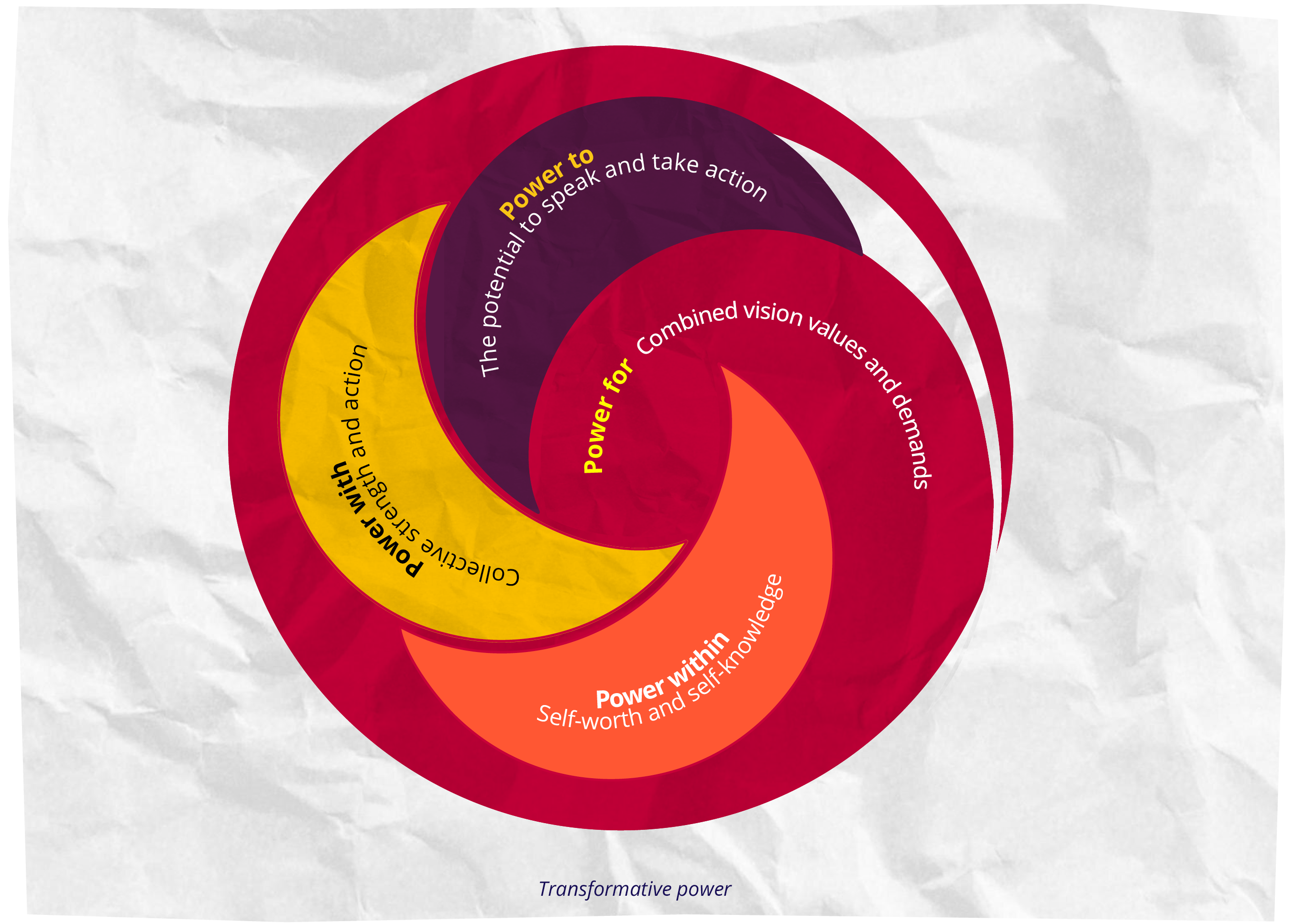
Activity 6: What generates transformative power?
Activity 6: What generates transformative power?
Materials: Large copies or hand-drawn versions of Transformative power and Movement ecosystem graphics, coloured cards
Plenary: Ask:
- From your experience, what strategies and processes generate and build power within, power to, power with, and power for?
Ask people to write short answers on coloured cards and cluster them on the Transformative power graphic.
Small groups: People self-select or divide according to forms of transformative power. Take turns telling stories that illustrate what you’ve seen and experienced regarding your form of transformative power. Choose one example to act out in a five-minute skit.
Plenary: Groups present their skit. After each one, discuss:
- What does the skit tell us about what it takes to build this kind of transformative power? Any ‘aha’ moments?
- How do the different forms of power contribute to building power overall? How do we know?
- How do these transformative power strategies strengthen the wider movement ecosystem?
Refer to Strategies for transformative power and select examples to discuss further.
Download this activity.
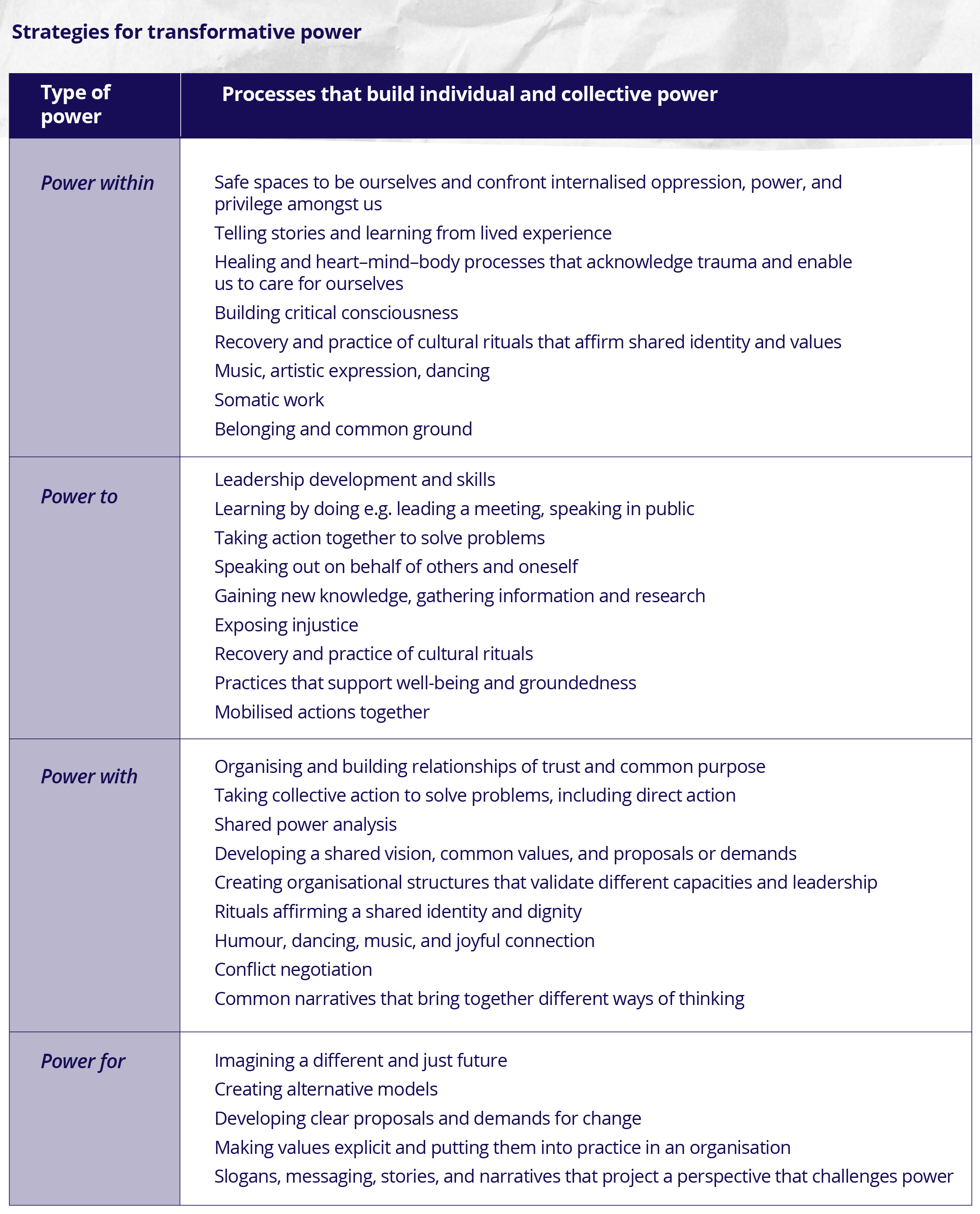
Activity 7: What blocks or generates collective power?
Activity 7: What blocks or generates collective power?
Materials: Flipchart with stickies/markers. Copies of handout: Organising vs mobilising.
Plenary: Experience and history demonstrate what prevents people from coming together and what helps people to converge.8 As discussed in Chapter 4: Intersectionality, systems of oppression within movements can undermine organising effort while, by contrast, political choices and commitments can build equitable, aligned relationships for greater impact.
Small groups: Discuss, with examples:
- What undermines or creates conflict in our movement formations, communities or organisations when we work together to address issues?
- How can our differences in terms of identity and life experience create conflict or confusion?
- What kinds of behaviour, approaches and ways of working across differences enable us to work together better and feel stronger?
Prepare a five-minute skit or a group drawing to share with the whole group, dramatising two scenarios. what undermines and what enables coming together.
Plenary: Groups present their skits or drawings. Invite discussion after each one. Once all the groups have presented, together identify and name the enabling and undermining features. Note responses in two labelled columns:
- What prevents or undermines coming together and building our power?
- What enables us to come together for change?
Discuss each point on the list drawing from experience and examples.
Distil a list of the essentials for building collective power. Each person notes one essential factor that they feel needs attention in their organisation or group on a sticky and posts it on a separate flipchart or virtual board.
Distribute the handout: Organising vs mobilising and take a moment to read it. Discuss:
- What is the difference between organising and mobilising? How are they connected?
- What are some examples of ways that people have organised or mobilised to create change?
- What can activists do differently to support either organising or mobilising?
Draw out the differences between organising and mobilising and discuss why this matters.
Download this activity.
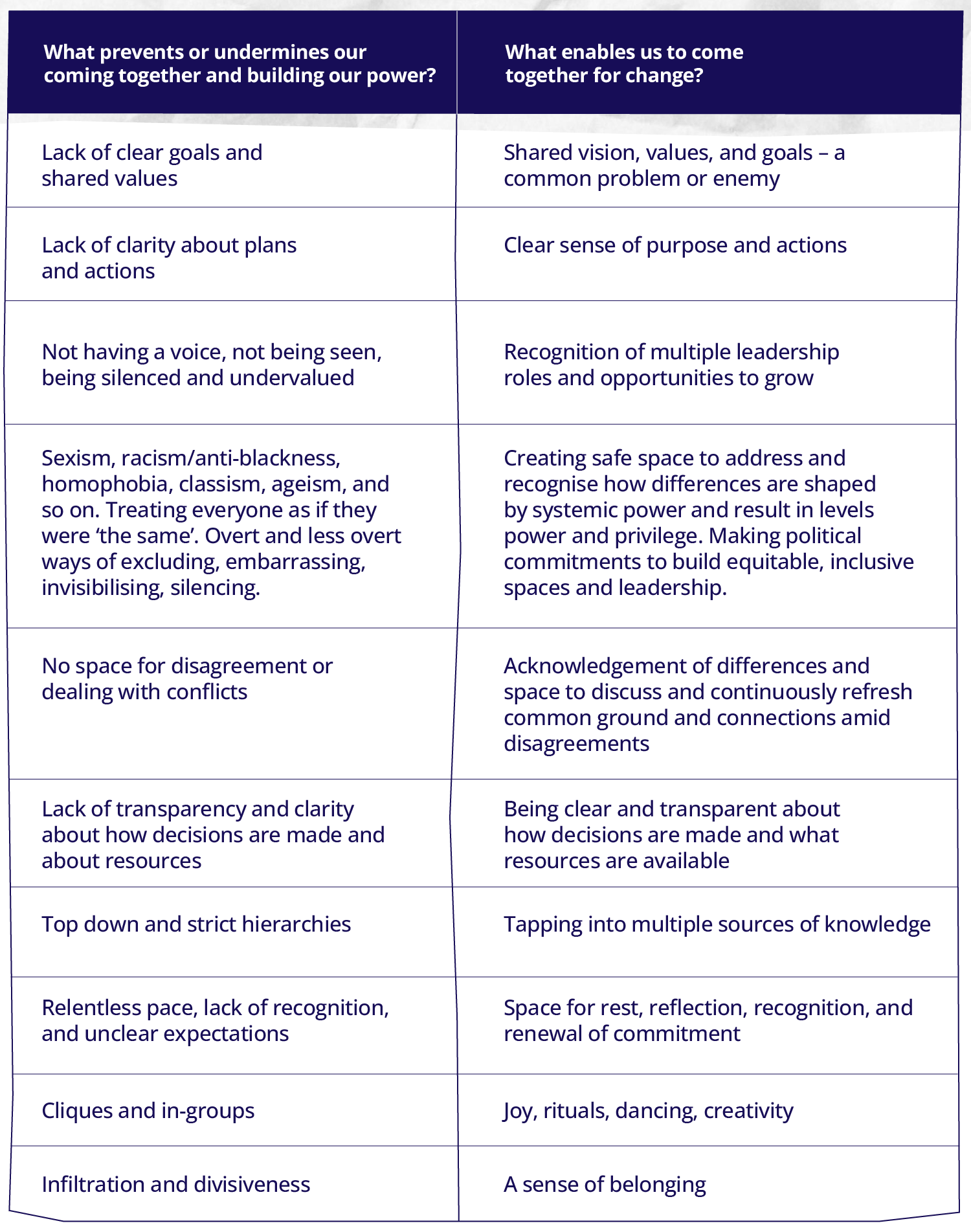
See more tools, approaches, and ideas about building collective power, organising, and dealing with conflict in We Rise: Building Up and Chapter 17 in A New Weave of Power, People and Politics, pg. 320-324 on conflict.
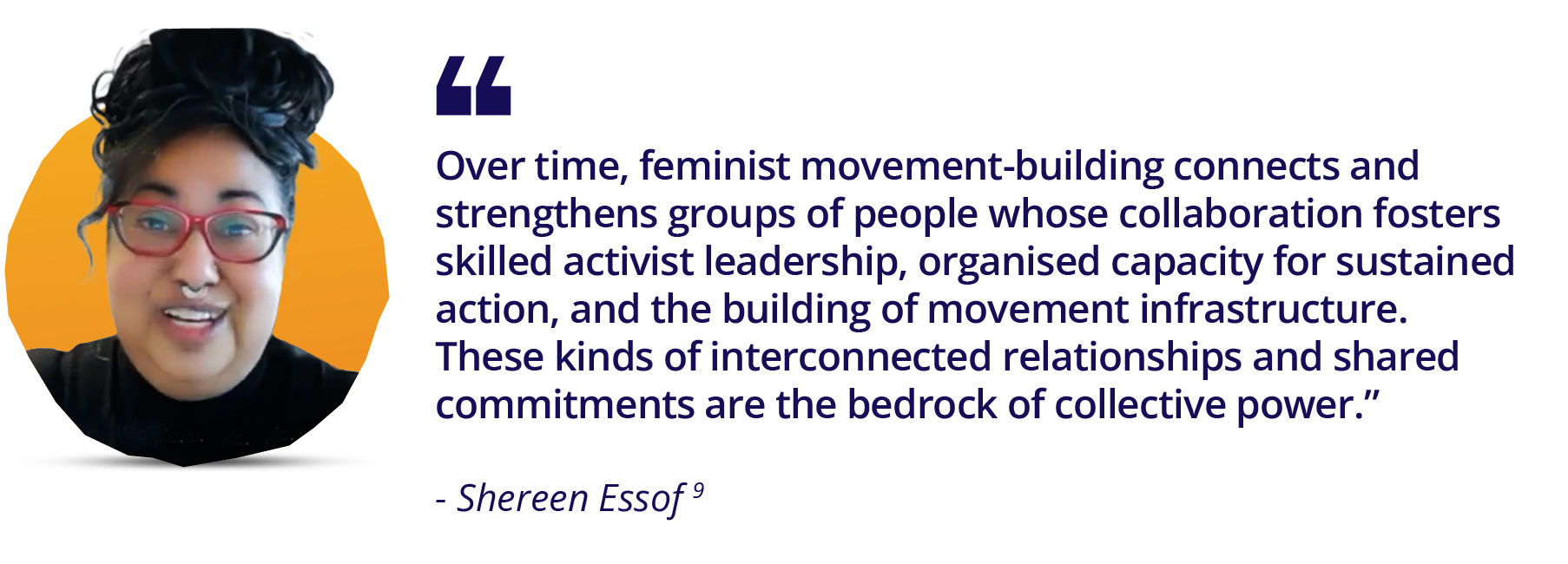
Organising vs mobilising
People often conflate organising with mobilising.10 While they are connected, they demand different strategies.
- Organising means bringing people together to find common ground around a shared injustice and problems. Through dialogue (or popular and political education process), they build political relationships and consider solutions that become a specific demand or forward-looking agenda over time. Organising happens in phases. It might start with loose formations but ultimately seeks to widen, multiply, and diversify the people who come together through alliances and networks with a sense of belonging, shared vision, and values that are key to movements. Organising can happen face-to-face or – especially in dangerous contexts – virtually or both. Many activists frame the challenge of organising as “How do we build our base or constituency?”
- Mobilising refers to sets of actions taken to activate and expand supporters through outreach to garner attention and to pressure for change using the power of numbers and virtual as well as face-to-face actions.
Mobilising tends to be short-term and tactical while organising means investing in leadership and skills, including the capacity to mobilise.

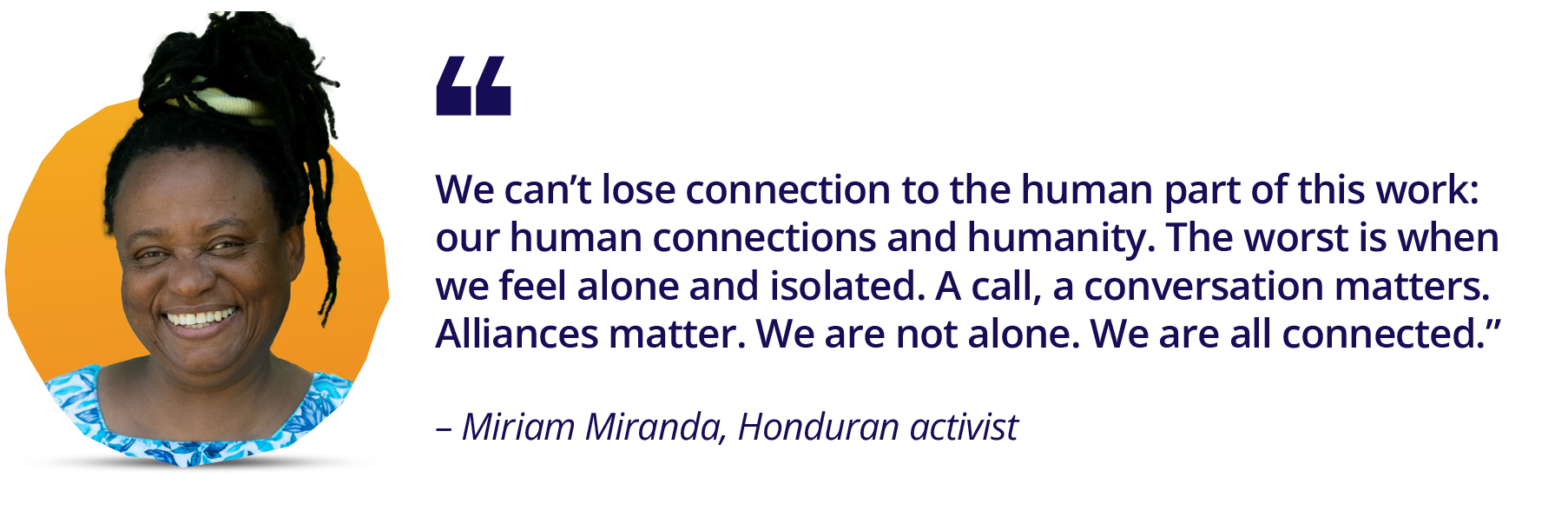
Download handout: Organising vs mobilising.
______________________________
8 See “Sources and Uses of Power” in A New Weave of Power, People and Politics, pg. 42 and 56, and Defining Power and its Sources on We Rise.
9 2022 JASS Annual Report.
10 Distinction attributed to Jane MacIlvey, US labor educator and organiser, in Building a Revolutionary Movement.
11 “The Big Difference Between Organising and Mobilising: How Unions Can Win in the Future” Alternet, October 21, 2015.
